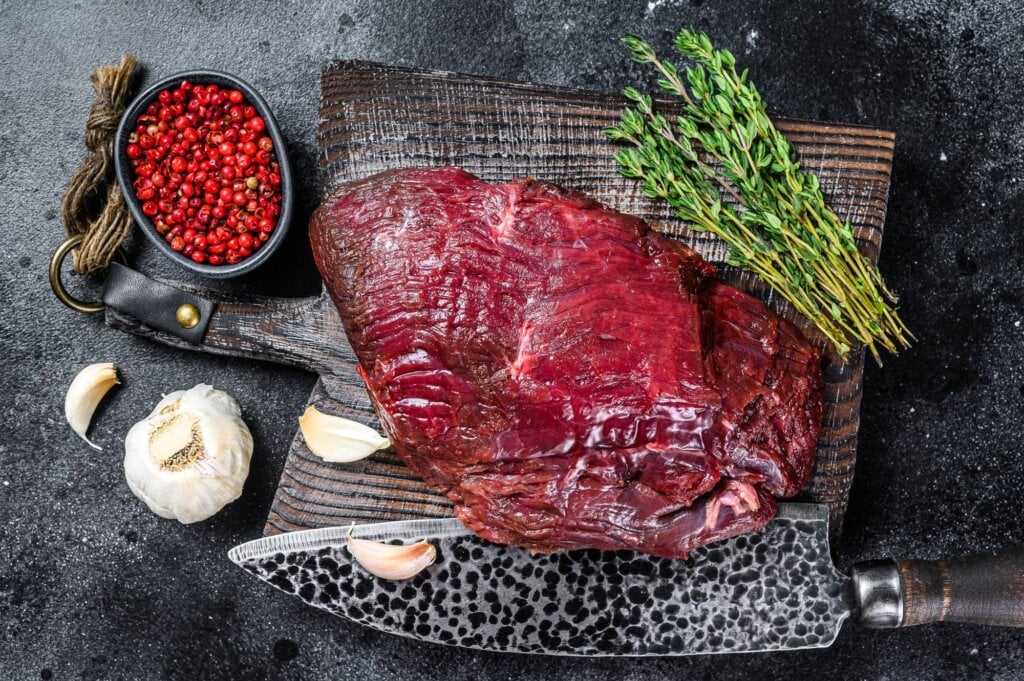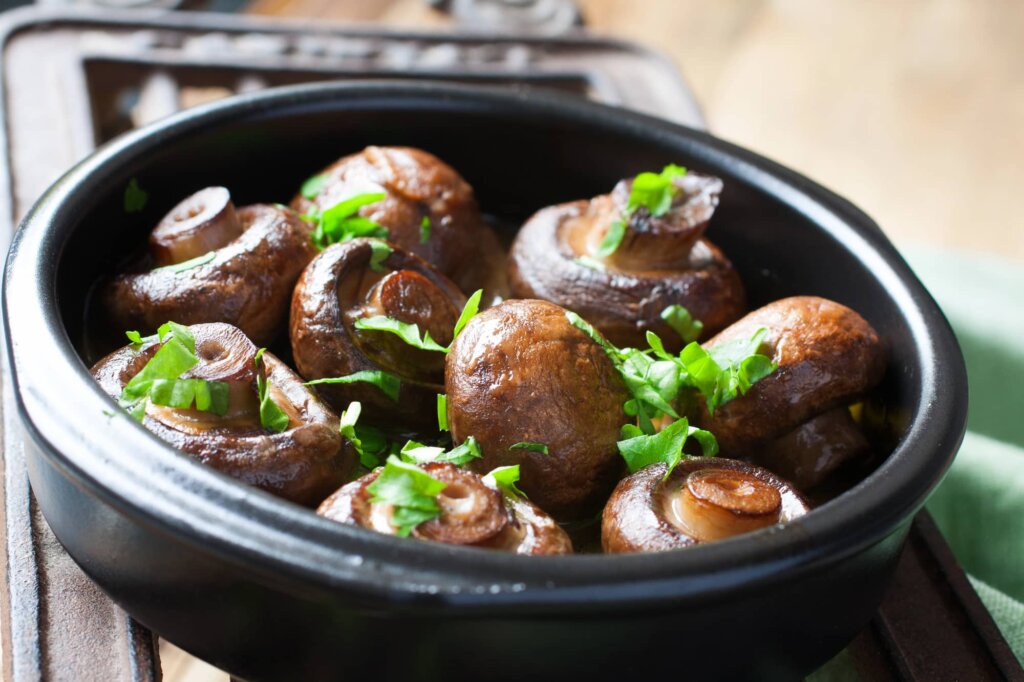
Beef is great, but sometimes you just need to mix it up with a new type of meat. Elk is a great choice because it’s a wild meat that’s often available from reliable farmed sources. This means you don’t have to wait for hunting season or go out on your own to enjoy its rich flavor and unique nutritional profile. Today’s farmed elk is just as healthy and lean as the steaks cut from animals that roam the prairies and hills. Explore what this kind of deer meat can add to your table and how to best cook it for delicious and tender results.
What is Elk Steak?
Elk are a kind of large deer that are native to the United States. They’re primarily found in states like Wisconsin, Michigan, and Montana, but there are varieties living in almost every part of the country. It’s a very lean red meat that has less fat than even grass-fed beef. The meat is rich in iron, zinc, amino acids, B12, and other important nutrients.
Elk also has even less cholesterol than chicken, making it a great choice for people who have been advised to avoid dietary sources of it. While you can find it ground or made into sausages as well, elk steaks are the best introduction to this kind of meat because of its flavor. Learning how to cook elk steak is largely a matter of practice.
Choosing the Right Cut
The cuts from an elk are similar to those available from other deer. You won’t necessarily find Porterhouse or other large steaks cut from these animals because they don’t have the same kind of muscle distribution as a domestic cow or pig. Instead, the muscle groups are largely left whole. The tenderloin is one of the best cuts from elk and other deer alike, and that’s one thing this meat has in common with domestic animals.
Backstraps are nearly as tender but offer a stronger flavor. This is equivalent to the ribeye from a cow. Flank steaks are a little tougher and need some tenderizing and a quick cooking method. Sliced hindquarter steaks are large and comparable to T-bone steaks, but you’ll need to expect some chewiness if you choose to cook them up.
Preparing Elk Steak
Unless you’re cooking a tenderloin or medallions cut from it, you should marinate the elk steak for more tender and flavorful results. Marinated elk steaks can be cooked any way you like with minimal changes to the process.
Seasonings and Marinades
If you plan to grill an elk tenderloin, the seasoning you need is a combination of Kosher salt, cracked black pepper, and a little garlic powder. Other marinades for steak work well for elk steaks as well. For example, combine soy sauce, lemon juice, apple cider vinegar, olive oil, Worcestershire sauce, and minced garlic for a great marinade.
The double dose of acidic ingredients will ensure thorough tenderizing while the other ingredients all boost the meat’s natural flavors. Red wine based marinades also work well for this kind of meat, as do Asian-style marinades with pineapple juice or other enzyme-based softening ingredients. Adding a little brown sugar to the marinade ensures the best possible searing on the surface while leaving the interior tender and medium-rare.
Tips to the Best Elk Steak
- Use a quick cooking method with relatively high heat or a slow and low cooking method. Both options will lead to tender meat without drying it out, while trying to cook at a medium heat level is likely to toughen the steaks.
- Physically tenderizing the steaks with a meat mallet not only leads to an easier chew after cooking, but can also help marinades penetrate deeper into the meat.
- If you feel that the elk meat you’ve tried has a gamy taste you don’t like, you can soak the steaks overnight in a vinegar or salt solution before marinating. Discard the water from the first soak or it will introduce the gamy flavor back to the meat.
Different Methods of Cooking Elk Steak
Explore all four of these cooking methods to determine which one results in the elk steaks you enjoy the most.
Grilled
Use a medium-high to high heat setting on a propane grill, or a rack directly over the coals for a charcoal grill. Cook the elk steaks for about five minutes per side before flipping them to ensure they get a good sear. For thin flank steaks, that’s likely all the meat will need to reach medium-well doneness. Tenderloin medallions should be flipped every three minutes instead since the meat will cook quickly. If you’re cooking a whole tenderloin, flip it every 5 to 8 minutes and baste with some of the marinade to keep it moist. Use an instant-read thermometer and ensure the meat reaches at least 150 degrees F for medium doneness, which is the rarest recommended safe cooking level for elk.
Pan Seared
Pan searing is a quick way to prepare elk steaks. It’s also the method that gives you the most precise control over the level of doneness. Use a heavy cast iron skillet and get it hot before adding your high-heat cooking oil. You can also place a skillet on a hot grill for the same effect. Place the elk steak in the pan and cook it for two minutes per side, adding a pat of butter on top once you’ve flipped it back to the first side. Keep cooking until it reaches 150 degrees F, measuring with an instant-read thermometer.
Oven Baked
Oven baking can lead to chewiness for larger steaks cut from the elk’s hindquarters, but tenderloins and backstraps are easily cooked this way. It’s a good choice for thicker cuts that won’t dry out during the longer cooking time. Place the marinated elk steaks on a wire rack in a baking pan. Cook at 400 degrees F for 15 to 25 minutes, depending on the desired level of doneness. Rest the steaks for about 5 minutes before serving. Let the steaks come to room temperature before cooking as well.
Smoked
Smoked elk tenderloin or flank steak is a flavorful treat that will slice easily without toughness or dryness. Steaks will only take about 30 minutes to cook in a smoker set to 300 degrees F. If you’re cooking a thicker tenderloin or backstrap roast, expect to smoke the meat for about 2 hours at 250 degrees F. You can do both if you’ve picked up a pack with both cuts of elk by putting everything in at 300 degrees F and then dropping the temperature for another hour of cooking after you remove the steaks.
What to Serve with Elk Steak
The bold and rich flavor of elk steak pairs well with earthy side dishes like buttered mushrooms, creamed spinach, and roasted potatoes. Consider serving your favorite cold salads alongside the steak for contrast as well. Make sure you have some kind of dinner rolls or fresh bread on hand to sop up the delicious juices from the steak, especially if you’re cooking a backstrap.

Conclusion
Experiment with other types of meat to break out of your routine with beef. Your family will be surprised to taste something so rich and juicy from a wild source. Farmed elk is widely available now across the country, but these cooking methods work just as well for steaks cut from the results of your latest hunt.

